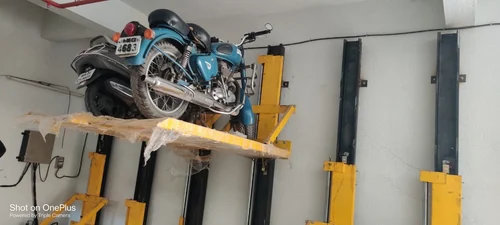India’s urban spaces are shrinking rapidly. The population is growing, and two-wheeler ownership is soaring. With limited parking space, especially in metros, buildings must adopt smarter parking strategies. One such innovation is the Bike Stack Parking Solution. But choosing the right one for your premises isn’t just about price or size. It’s about compatibility, safety, efficiency, and long-term value.
Understand Your Parking Needs First
Assess the current parking capacity of your facility before making any system investments. Measure the horizontal and vertical space that is available. Determine how many two-wheelers are parked each day. Examine user convenience and peak parking hours as well. The parking load for Indian structures frequently exceeds the available space, particularly in metro areas. Planning so becomes essential. With careful selection, a bike stack parking solution can double or even triple your parking capacity.
Analyse the Types of Stack Systems Available
Bicycle stack parking primarily comes in two varieties: semi-automatic and manual. Manual systems are labour-intensive to use and are often best suited for small communities. Mechanical or hydraulic lifts are used in semi-automatic systems. These are appropriate for larger structures or commercial settings. Every type has benefits and drawbacks. Although manual solutions are less expensive, they need work. Although they require maintenance, semi-automated ones are quicker and easier to use. Consider the size of the facility and the expectations of your residents.
Check Load-Bearing Capacity and Durability
The additional weight of a bike stack parking solution must be supported by the infrastructure of your building. By storing bikes vertically, these solutions put more strain on particular areas. A structural engineer should be consulted before making judgments. Older structures in India frequently lack the support necessary for further mechanical configurations. The system’s materials ought to be waterproof and resistant to rust. After all, even in dusty or humid conditions, durability guarantees long-term performance.
Prioritise Safety and User Friendliness
Never compromise on safety. Sturdy lifts, anti-slip platforms, and locking systems are all components of an effective bike stack parking solution. Indian consumers come in a variety of age groupings. Therefore, the young and old should be able to use the system. Accidents are decreased by non-slip ramps, convenient handle access, and lockable stands. Security is further increased by fire safety clearances and adequate parking zone lights.
Consider Maintenance and After-Sales Support
A system requires maintenance regardless of its level of sophistication. Ask about support teams, spare component availability, and service intervals before making a purchase. It can be difficult to acquire prompt maintenance in India, particularly in Tier-2 and Tier-3 cities. Thus, make sure service centres are reachable. User training is also essential. Operating instructions and setup demos are provided by numerous suppliers of Bike Stack Parking Solutions. Select a solution that offers assistance after installation.
Evaluate Space Optimisation
Even housing societies in many Indian cities do not provide open parking. Vertical stacking is therefore the best option. Space usefulness can be increased by up to 70% with a well-designed bike stack parking solution. Take into account the pillar locations, ceiling height, and bike turning radius. Additionally, pick a model that makes entry and exit simple. For structures with uneven layouts, compact designs with modular attachments work well.
Match the Solution With Building Aesthetics
Both form and utility are goals of contemporary architecture. It should not appear that your bike stack parking solution is out of place. Select units that are streamlined, small, and colour-neutral. Powder-coated or stainless steel frames are effective. A visually appealing parking system increases customer happiness and property value. The system design ought to blend in with the overall architecture of high-end residential or office complexes.
Understand Local Regulations and Permissions
In many Indian municipalities, adding parking spaces or making structural alterations requires permission. Consult your local government before installation. Updates to the occupancy certificate or fire clearance may be required for the Bike Stack Parking Solution. Penalties may result in noncompliance. Therefore, seek a building consultant or the legal team of your society. Permits provide a seamless implementation and avert problems down the road.
Compare Costs, But Focus on Value
Buyers are frequently misled by upfront costs. A less expensive bike stack parking solution could not be as safe or long-lasting. Think about lifecycle value. How long is the warranty valid? How frequently will it require repairs? Does it lower parking infractions or theft? If applicable, examine its power consumption as well. A solid offer for Indian buyers strikes a balance between long-term performance and upfront investment. Don’t sacrifice important features for little cost reductions.
Think Long-Term and Plan for Expansion
You may have a manageable number of bikes right now. However, the density of cities is growing. Make a plan in advance. Select a bike stack parking option that permits growth in the future. Scaling without significant infrastructure changes is made possible by modular designs. A wise investment now guarantees years of seamless operation. Later, expansion-ready units save money, time, and inconvenience. This foresight is crucial in rapidly expanding Indian cities.












